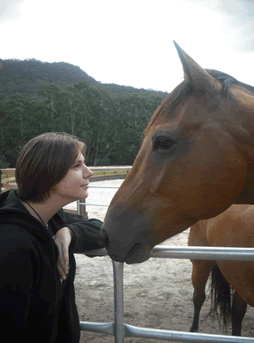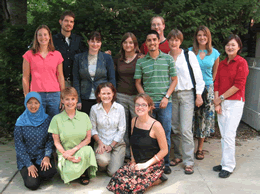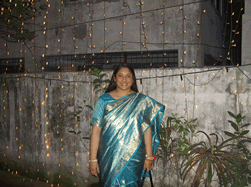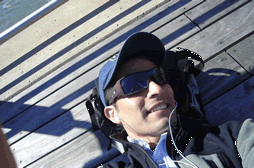 |
 |
 |
 |
 |
 |
 |
 |
 |
 |
 |
|||||||
 |
||||||||
 |
||||||||
 |
||||||||
 |
||||||||
| Click on images above to learn more about the coauthors. |
-
Home
-
Introduction
-
Chapter 1: Digital Literacies, Technological Diffusion, and Globalization
-
Chapter 2: Digital Media & Transnational Connections: From Sarajevo, Bosnia-Herzegovina, and Sydney, Australia
-
Chapter 3: Cultural Designs for Writing Digitally: From Urbana, Illinois, and Afar
-
Chapter 4: Acts of Translation in the Academy and Across National Boundaries
-
Chapter 5: Global Digital Divide: From Nigeria and the People's Republic of China
-
Conclusion
-
Resources
INTRODUCTION: Overview of Chapters
Each of the chapters that follow presents stories from the lives of participants, while the introduction and conclusion provide a theoretical framing through which to understand the literacy narratives. Here we discuss the individual chapters.
In chapter 1, “Digital Literacies, Technological Diffusion, and Globalization,” we introduce the 13 individuals who are participants in and coauthors of this multiyear study. We have also included the countries in which the participants were born and individual photos of each. Born between 1969 and 1988, all are part of the growing number of students and colleagues with transnational connections who are taking classes, working on degrees, or now teaching as faculty members at colleges and universities or engaged in other kinds of work. Regardless of their current status or their country of birth, they all continue to populate a global and transnational eduscape (C. Luke, 2006) and, as part of the same generation, share some similar perspectives. In addition to introducing all 13 participants, the chapter attempts to establish the cultural ecology—the historical, political, economic, and technological milieu—in which they all live. We note, for example, that for most of their lives, even the eldest among them knew little of a world devoid of digital communication networks and rapid technological change.
Kate Polgaze
Chapter 2, “Digital Media & Transnational Connections: from Sarajevo, Bosnia-Herzegovina, and Sydney, Australia,” is presented in five parts. It focuses first on the literacy narratives of Gorjana Kisa and Mirza Nurkic, who, with their parents, emigrated from the former Yugoslavia to Sydney, Australia. We then focus on the narratives of Kate Polglaze and Tessa Kennedy, who were born in Australia. When we met the participants in 2007, all four were undergraduates at the University of New South Wales and were well into their studies, thinking about what they might do when they graduated from the university. The complexly articulated social formations of globalization and the diffusion of digital communication technologies provide a dynamic backdrop for the lives of the four undergraduates. We invite readers to listen to their interpretations of their transnational literate lives through the videos we provide. Introducing each video is a sampling of their responses in their own words.
Introduction to Writing Studies: Gail Hawisher's 2005 class with
coauthors Sophie Dewayani, Yu-Kyung Kang, and Ismael Gonzalez
Chapter 3, “Cultural Designs for Writing Digitally: From Urbana, Illinois, and Afar” is presented in four parts and includes the literacy narratives of Shafinaz Ahmed, Sophie Dewayani, and Yu-Kyung Kang of Bangladesh, Indonesia, and South Korea, respectively. All three were graduate students in different writing studies classes at the University of Illinois when we met them. In this chapter, we depart from presenting video interviews with our coauthors and instead include the writing process videos that they themselves crafted and ultimately used to represent the ways in which writing becomes part of their everyday lives. Like Chapter 2, this chapter complicates notions of literate activity, but it also goes on to highlight the importance of culture and ethnicity in shaping literacy values. In addition, it considers the critical choices individuals make in departing from common cultural expectations.
Shafinaz Ahmed
In chapter 4, “Acts of Translation in the Academy and Across National Boundaries,” we attempt to capture the life histories of three individuals—Vanessa Rouillon, born in 1969 in Lima, Peru; Ismael Gonzalez, born ten years later into a large family in Ocotepec, Mexico; and Hannah Kyung Lee, born in 1980 in Chicago, Illinois. Like the graduate students in chapter 3, Vanessa, Ismael, and Hannah were enrolled in graduate writing studies classes at the University of Illinois. In somewhat different ways, Ismael and Vanessa were concerned with academic literacy as it is construed in North American universities. Each one demonstrates that for students attending institutions of higher education in other countries, information and communication technologies, along with literate practices, represent acts of translation, an essential feature of their globalized world. Our third coauthor, Hannah Kyung Lee, though born in the United States, nevertheless claims a transnational identity as a second-generation Korean American moving between the worlds of home and school and beyond.
Ismael Gonzalez
In chapter 5, “Global Digital Divide: From Nigeria and the People’s Republic of China,” we discuss the literacy narratives of coauthors Dipo Lashore and Pengfei Song, who grew up a world apart but both attended school in the United States for undergraduate studies and became increasingly immersed in learning digital literacies. In addition to looking at literacy and the complexities of the global digital divide, chapter 5 demonstrates our earlier method of collecting life history interviews before we moved to video recordings or asking participants to create with video a segment focused on their writing processes. Thus the chapter not only introduces literacy narratives of transnationally connected students from Nigeria and the People’s Republic of China, but also provides a tracing of an emerging methodology.
In the conclusion, we argue that the narratives these students relate about their literacy practices, through either their life history interviews or their writing process videos, are rich in complexity and, we believe, have benefited from a methodology that brings together several approaches. The concluding chapter examines the findings of all the chapters and pulls together the insights of the volume to suggest different and increasingly accurate ways of understanding the new information technologies and their relationship to transnational literate lives. It also introduces the work of Synne Skjulstad, who in many ways was an inspiration for a methodology that now makes use of digital media to collect, analyze, and present the research itself. By illuminating the relationships between digital media and literacy, individuals themselves, and the cultural ecologies within which they practice and learn literate behaviors, we hope that the conclusion will provide scholars and educators in writing programs, digital media classes, public literacy programs, and workplace settings with guidance in thinking about and dealing with digital literacy issues.
We offer the following eight observations:
OBSERVATION 1
Individuals who identify as transnational use digital networks to navigate and communicate across geographically discontinuous communities. With these literate practices, they create digital communicative landscapes, connected spaces of globalized human flows that resist a simple mapping onto conventional, physically contiguous geopolitical spaces.
OBSERVATION 2
Participants shared a complex, nuanced, and culturally situated understanding of technology's affordances and limitations, which they employed to make decisions about the rhetorical and material appropriateness of various technologies both within the digital landscape and outside of it.
OBSERVATION 3
Participants tend to possess a rich set of linguistic resources, including varieties of languages that help define and situate their multiple identifications both locally and globally. They deploy these linguistic resources within digital communicative landscapes that both supported and were shaped by their practices.
OBSERVATION 4
Individuals' attitudes toward digital technologies and their use are highly dependent on the cultural ecologies that the participants inhabit, whose variations include generational, geographic, and gender differences, as well as on the individuals' particular experiences.
OBSERVATION 5
Many of the coauthors spoke of the high value their parents had placed on education and of their own efforts to continue that tradition; this valuation existed side by side with, and was often linked directly or indirectly with, their deployment of communication technologies and digital networks.
OBSERVATION 6
For the most part, those who participated in this study learned to use technologies on their own and with friends. Most contributors did not receive extensive instruction in using digital media in school, nor did they remember much direct help in learning technologies from their parents, although parents supported their use of digital technologies, often in material ways.
OBSERVATION 7
All participants have a strong sense of the value of cultural diversity and of the appropriate use of technology. Those students who claim transnational identities would benefit from and contribute immeasurably to curricula developed specifically for understanding the complexities of forging identities across global and translingual landscapes. Such curricula would also greatly benefit students with more limited exposure to other peoples, cultures, and literacy practices, extending their understanding and awareness of difference and the range of communication resources that can be brought to bear on problems of global and local significance (Kalantzis & Cope, 2006).
OBSERVATION 8
Digital media—such as video, audio, e-mail, images, texting, mobile phones, and even social networking sites that serve as repositories for these media—can act as powerful research tools for collecting and exhibiting life history interviews, literacy narratives, and writing process videos when these tools are put in the hands of researchers and research participants alike.



